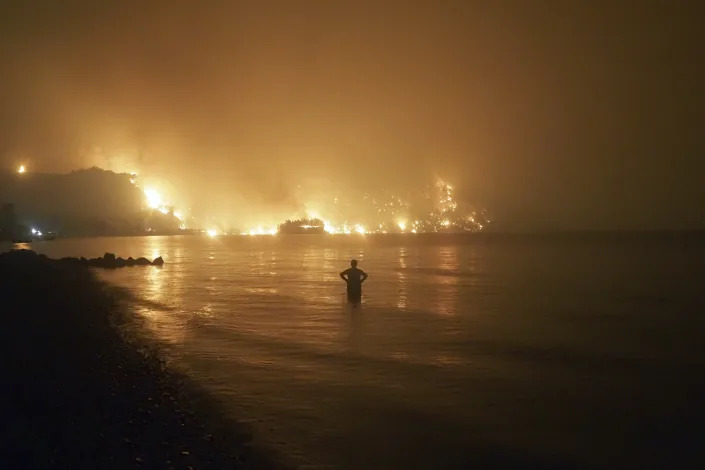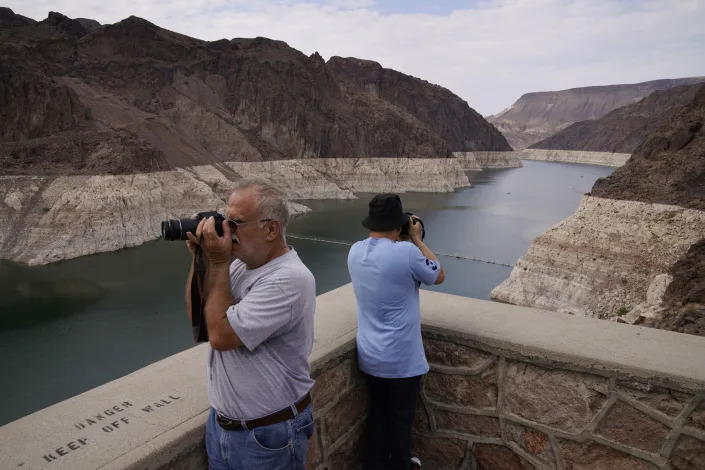USA Today
‘It was time to fight back’: My journey from the Republican Party, through grief, to advocacy
Rachel Vindman – October 31, 2021
On Sept. 27, 2018, I was volunteering in my daughter’s second-grade classroom. My phone was buzzing with updates of Christine Blasey Ford’s testimony during Brett Kavanaugh’s confirmation hearing. I remember the day so clearly; after I finished at the school, I sat in my car and listened to a recording of her opening statement before the Senate Judiciary Committee.
I believed her, and yet my deep skepticism of the news media, my belief in our “system” and my conservative political identity left me searching for reasons to discount her testimony. Maybe she misremembered who had attacked her or the severity of the attack? I could not get her out of my mind. She had displayed such bravery and grace in the face of the ugly and vile attacks.
So began my journey away from the Republican Party.
Grieving and growing
The following month I read Max Boot’s “The Corrosion of Conservatism,” which I couldn’t get out of my head for months. The Trump administration continued to erode my faith in the strength of our American democracy. As a foreign policy expert, my husband did not follow domestic policies and politics like I did, so we didn’t discuss it much; he knew how I felt about President Donald Trump, but he had a job to do, and he has never been one to care about “palace intrigue” and gossip.
The following January, I attended a Women’s March for the first time. I felt like a fraud; Alex and I drove to Washington, D.C., together, and we parked in front of the White House as he went to work in the building while I attended the march. I was plagued with major imposter syndrome!

Then, a mere 13 months after Ford’s testimony, it was my family in the eye of the storm, weathering ugly and vile attacks and withering criticism from the president and some lawmakers as my husband, Lt. Col. Alexander Vindman, testified during Trump’s first impeachment.
As I sat awake in the early hours of Oct. 29, 2019, I realized something. I didn’t leave the Republican Party. It left me.
Alexander Vindman: The White House staffer who sparked Trump’s 1st impeachment, tells his story
The first days and months after Alex’s testimonies were acutely uncertain and scary. It reminded me of my mother’s cancer diagnosis or my very high-risk pregnancy with our surviving daughter; at first your head spins as you process the news, then you learn to live in the storm despite being terrified. There is no other choice because children must be fed, bills must be paid and life needs to be lived. So you figure out how to put one foot in front of the other. It’s the story of women since time immemorial.
This period lasted for almost a year. Only in looking back at it now can I see how awful it was; we were going through the stages of grief and we could only speak to very close family and advisers. Thankfully we had each other, but the isolation took a heavy toll. A few weeks into my husband’s retirement in the summer of 2020, I heard about another journalist – one I have followed for a long time – whose life and family were being threatened. That was my moment. I remember where I was when I heard the story and I made the decision right there: I would no longer be silent.

It was time to fight back, publicly and in a way that honored and reflected what my family and those close to me had endured. It was important to me to speak out in ways that were a genuine reflection of who I am in real life. I want my family and close friends to see me on TV or read something I wrote and think, “Yes, that’s Rachel.”
So I proudly joined a movement of women who were using their voices and talents to fight for the things that mattered most to them. I began to engage and found more ways to promote democracy, amplify women’s voices and ensure my voice is heard in my local community as well as on a national level.
The best me for this season of my life
It is hard to articulate the sense of freedom and empowerment I experienced once I began speaking out and working on causes and issues that are important to me. Every week on my podcast, “The Suburban Women Problem,” we speak to every day women who are making a difference in their communities, and every week I am inspired. For me, a huge part of telling their stories is talking about the good and the bad: what motivates us and how we came to this work while also discussing the difficult parts. Like so many others, I have guilt over adding more responsibilities and activities to my already full calendar – if you’re reading this and you’re waiting on me for a response to an email or something else I owe you, know you are not alone.

I have lost friends due to my activism. There are even those who supported us during the impeachment saga but have since distanced themselves because they do not understand why I refuse to return to my “regular” life. To them I simply say this is the most authentic version of Rachel Vindman for this season of my life. I don’t know how long this moment will last, but I am committed to doing all I can do now.
More than two decades ago, I was hiking near the Sea of Galilee. The main part of the hike was through a river bed that was filled with softball-size rocks that were impossible to stand on so my companions and I were forced to constantly move forward or we would lose our balance and fall. I tried to stop once, and I fell. I still have the scar as a reminder that I must keep moving forward. The scenery and companions change throughout the years, but our goal should remain the same. Keep moving forward.
Rachel Vindman is a wife, mom, podcast host, writer and activist.






































